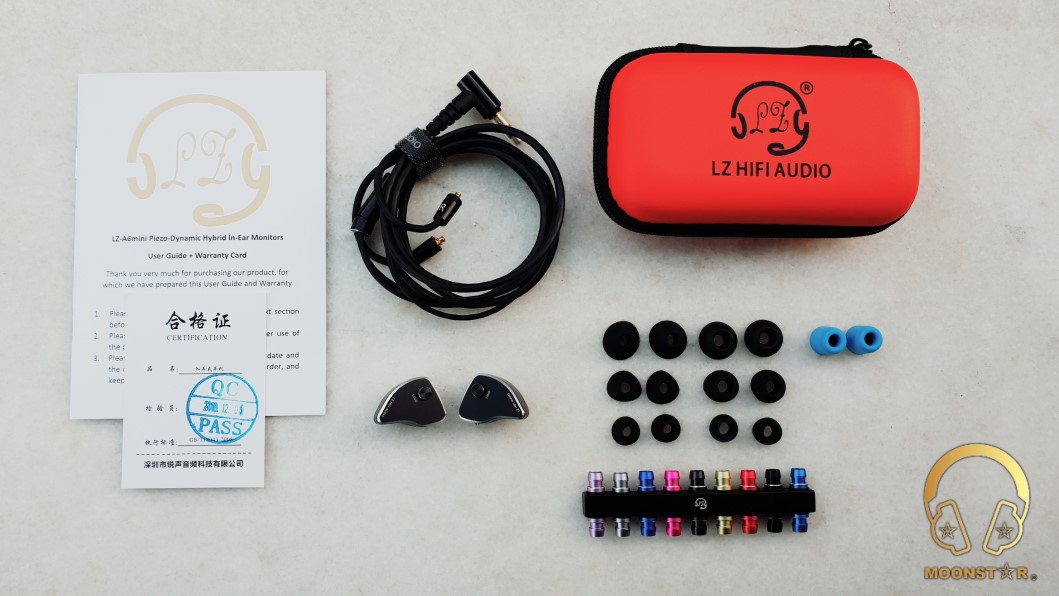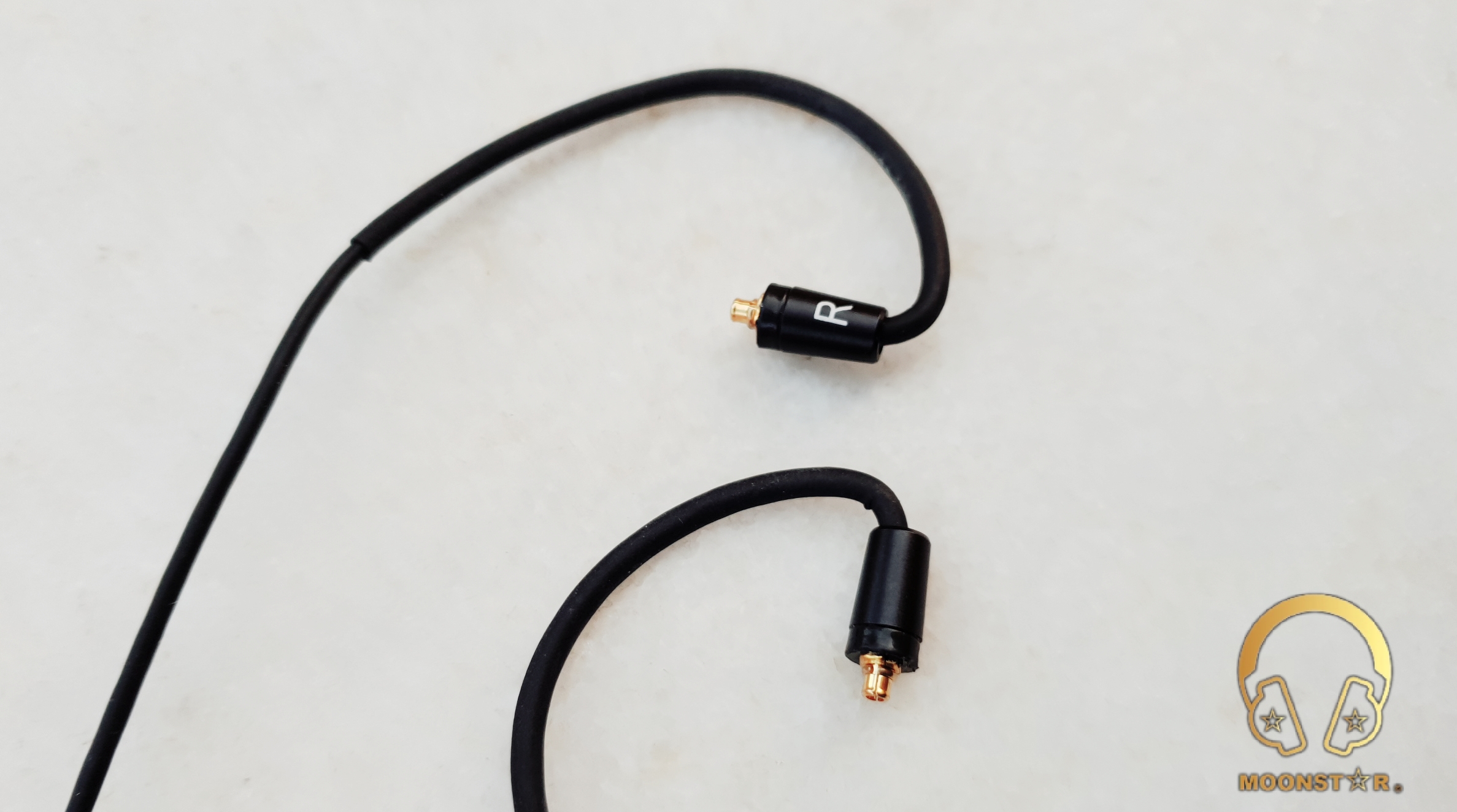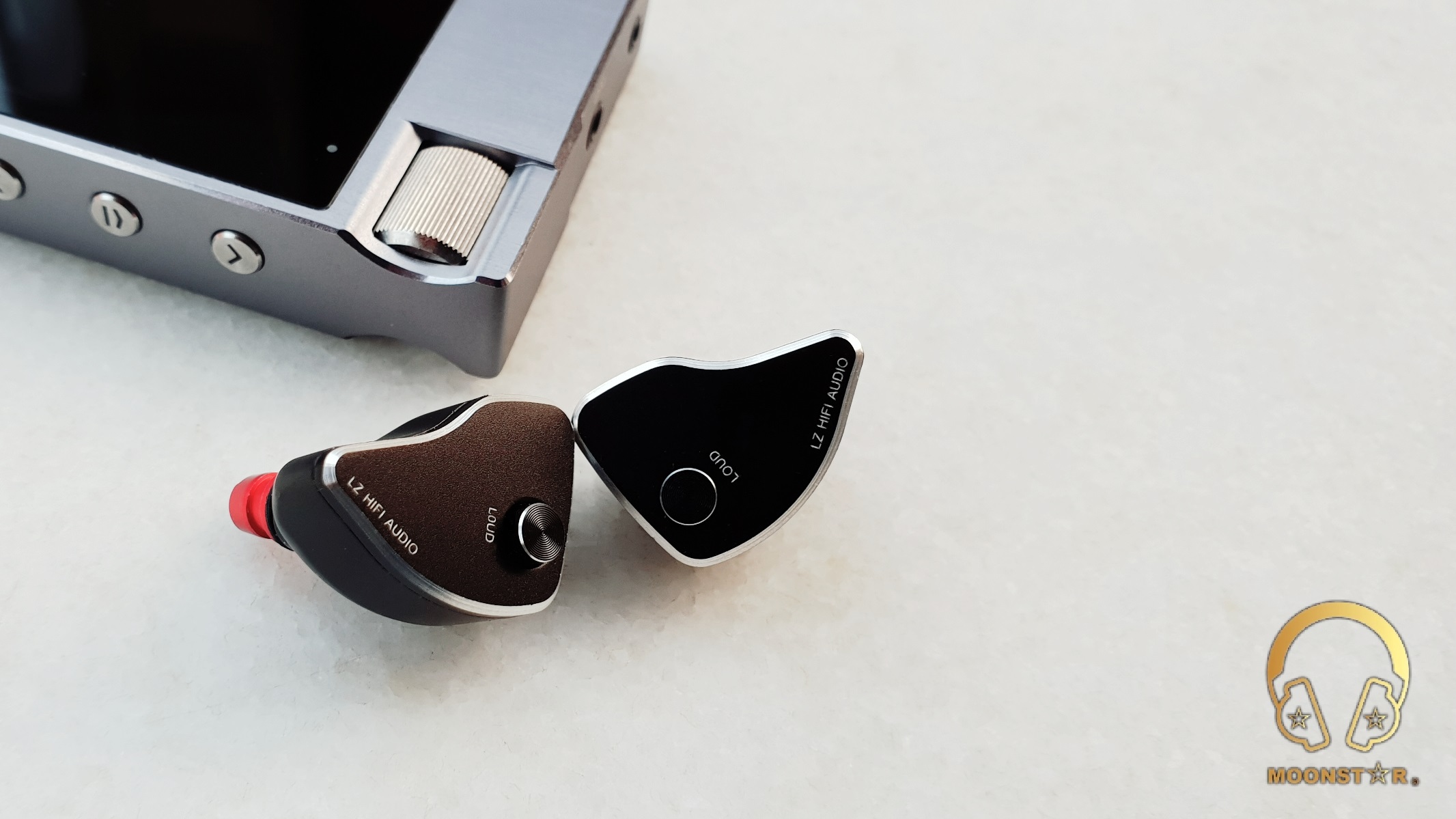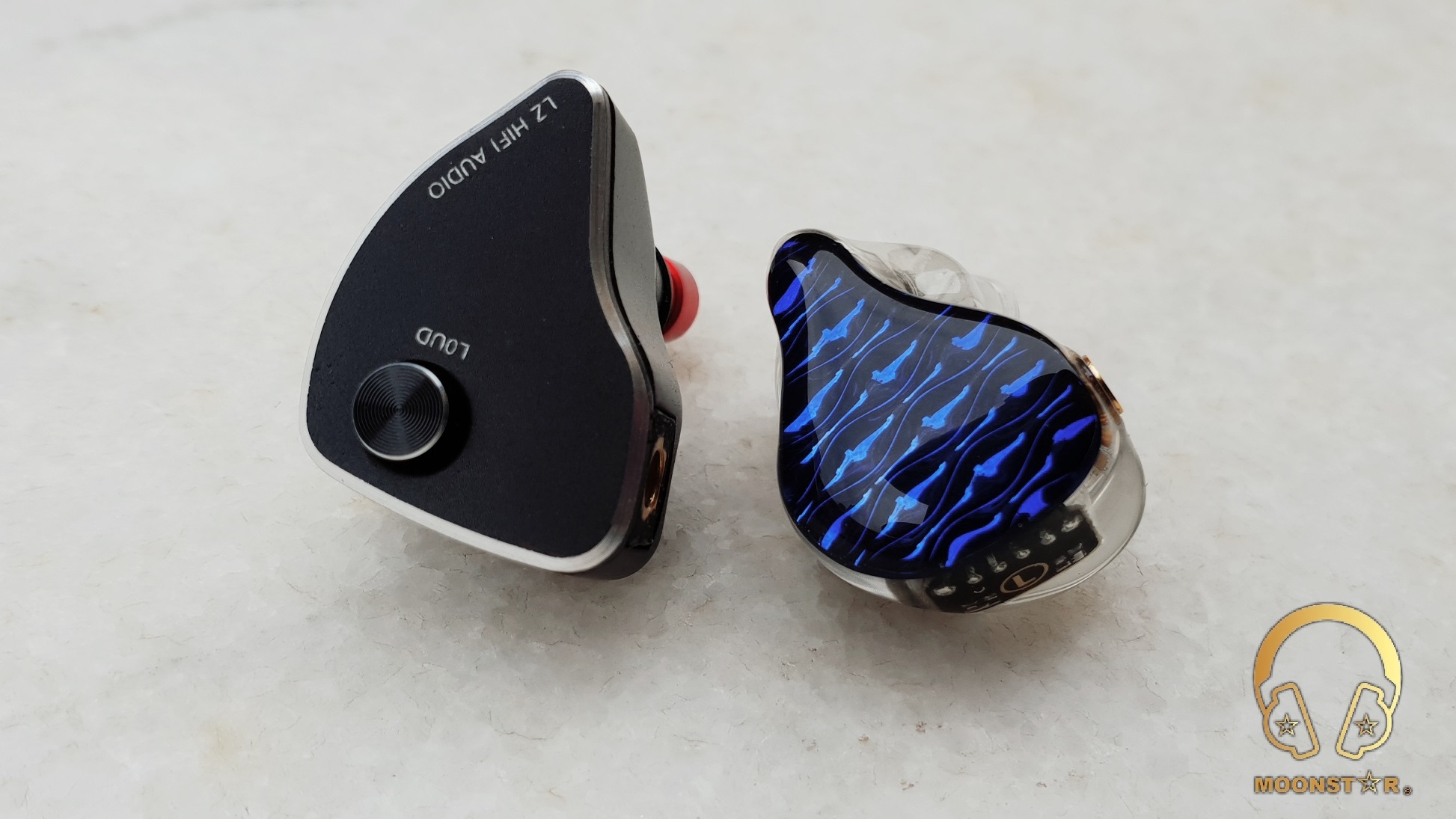LZ HiFi Audio A6 IEM Review

LZ Hi-Fi Audio A6 Review
The Colorful Butterfly!
Introduction:
LZ (老忠 Lao Zhong) Hi-Fi Audio is a Chinese company that is specialized in the production of In-Ear Monitors and is know with some models like the LZ A2/A2s, LZ A3/3s, LZ A4, LZ A5, LZ Big Dipper etc. The main feature of almost any LZ Product is the ability to chance the sound tuning via Filters (LZ A4, LZ A5, LZ A6) or switches (LZ Big Dipper).
The LZ A6 and the LZ A6 mini are their latest products and featuring a Hybrid Driver configuration. The LZ A6 that I will now review for you has a 6-way hybrid driver configuration with 1 x 10mm Dynamic Driver + 4 x Balanced Armature Drivers + 1 x Piezoelectric Ceramic Driver, which sounds on paper pretty interesting.

Disclaimer:
I would like to thank LZ Hi-Fi Audio for providing me this sample via Penon Audio for review purposes. I am not affiliated with LZ Hi-Fi AUdio and Penon Audio beyond this review and these words reflect my true and unaltered opinions about the product.
Price:
The LZ A6 is available on Penon Audio for 310 USD under the link below:
Purchase Link: https://penonaudio.com/lz-a6.html
Package and Accessories:
The LZ A6 is coming in a rectangular red box with the LZ Logo, which is wrapped with a black cardboard that sports the brand logo and model description in glossy violet color.

This box is including the following contents/accessories;
- 1 pair x LZ Hi-Fi Audio A6 In-Ear Monitor
- 1 pcs x Detachable Cable with MMCX or 0.78mm diameter 2-Pin connectors
- 6 pairs x Silicone Ear Tips
- 1 pair x Foam Ear Tips
- 9 pairs x Sound Tuning Nozzle Filters
- 1 pcs x Carry Case



Design, Fit and Build Quality:
This CNC machined aluminum housing of the LZ A6 looks and feels with one word “Rock Solid!” It’s not a very lightweight IEM but the weight is also not on an irritating level and fits fairly comfortably in my ears.

The monitor has a black painting except the edges on the front of the faceplate, which is metallic (seems un-painted) in color.

On the front of the faceplate is a small vent, the LZ HiFi Audio branding and the gain switch with the description “LOUD”. You can push this button to switch between 20Ω with LOUD on and 45Ω with LOUD off which is not a gimmick!

The LZ A6 is available in two (2) connector variants, which are the MMXC and 2-Pin (0.78mm) options. The connector of the LZ A6 is at the top of the monitor shell and looks pretty solid such like the rest of the product.

On the back of the monitor shell is a small vent and the sound nozzle which is interchangeable and can be screwed. You have the option of using one (1) of the nine (9) sound nozzles.

The detachable cable of the LZ A6 is pretty thick and doesn’t look as sexy as other cables, such like braided ones on the market. But the soft rubber coating is avoiding microphonic effects.

The MMCX (or 2-Pin) connectors have plastic housings with left / right indicators. The cable sports also on both sides, flexible heat-shrink ear guides, which makes is quite useful for a more comfortable wearing experience.

This cable features also a y-splitter and chin slider and both are made of the same metal material same as the monitor housing.

The 3.5mm (unbalanced/TRS) headphone jack has an L- angled profile and sports a metal housing with a plastic strain relief. The cable features also a velour cable organizer, which is a nice addition.

Fit and Comfort:
The A6 is not a very lightweight IEM but the weight is also not on an irritating level and it fits fairly comfortably in my ears. The Isolation of the A6 Mini is on an average level.
Specification
- Model: LZ-A6
- Driver: 6-way hybrid drivers, 10mm DLC diaphragm dynamic wooferx1 , 7 layer parallel piezoelectric ceramic extra-high frequency driver x1, midrange BA x 2, treble BA x 2
- Frequency response: 10Hz-40kHz(depending on nozzle choice)
- Nominal Impedance: 45Ω with LOUD off, 20Ω with LOUD on
- Sensitivity: 110dB with LOUD off, 115dB with LOUD on
- Cable: 1.3m 3.5mm single-ended stereo plug
- Connector:MMCX or 2Pin 0.78mm
- Designed according to CTIA IECQ standard
- 1 gain switch
- 9 pairs of sound tuning nozzles
Sound Tuning Filter Specifications:

Group A: frequency response 10Hz-40 kHz
- Blue: 3-7kHz±3dB
- Black: 3-7kHz±0dB
- Red: 3-7kHz-3dB
Group B: frequency response 15Hz-30 kHz
- Gold: 3-7kHz±3dB
- Dark gray: 3-7kHz±0dB
- Pink: 3-7kHz-3dB
Group C: frequency response 20Hz-20 kHz
- Dark Blue: 3-7kHz±3dB
- Sliver: 3-7kHz±0dB
- Purple: 3-7kHz-3Db
Equipment’s used for this review:
IEM’s : LZ Hi-Fi Audio A6, FiiO FA7, TFZ Secret Garden HD
DAP&DAC’s : QLS QA361, Cayin N5II, Fiio M9, Astell&Kern A&Norma SR15

Albums & tracks used for this review:
- First Aid Kit – My Silver Lining (Spotify)
- London Grammar – Interlud (Live) (Flac 24bit/44kHz)
- Laura Pergolizzi – Lost On You “Live at Harvard and Stone” (Tidal Hi-Fi)
- Minor Empire – BulbulumAltinKafeste (Spotify)
- Leonard Cohen – You Wnt it Darker (Spotify)
- Dave Gahan – Kingdom (Tidal Hi-Fi)
- Eric Clapton – Wonderful Tonight True (Flac 24bit/96kHz)
- Vivaldi – Le QuarttroStagioni “The Four Season” (Tidal Hi-Fi)
- Alboran Trio’s – Cinque Lunghissimi Minuti (Tidal Hi-Fi)
- Otto Liebert & Luna Negra – Up Close “Album” (DSF) – Binaural Recording
- Lorde – Team (Flac 24bit/48kHz)
- Massive Attack – Angel (Tidal Hi-Fi)
- Portishead – It Could Be Sweet (Spotify)
- Liquid Tension Experiment 2 – Acid Rain (Spotify)
- Opeth – Damnation (Tidal Hi-Fi)
- Metallica – Sad but True (Flac 24bit/96kHz)
- Megadeth – Sweating Bullets (Tidal Hi-Fi)

The Sound:
As I have motioned before the LZ A6 is an In-Ear Monitor with 9 sound tuning filters which are allowing you to fine tune the sound to your likings. For example you can change the tonality from neutral to warm, from bright to dark or can increase the bass from linear to bass-head levels which is a big advantage.
My favorite filters are the red and the pink, while I prefer the pink filter for fast genres and the red one for bass intensive songs.
Loud On/Off Switch:
The LZ A6 has a Loud On/Off switch which work as a gain button. When the Gain button is On Position (pressed down) the LZ A6 can be driven easier. One of the most remarkable differences in the sound when the button is “On” is the increase of the bass quantity. If you don’t activate the Loud Button, the LZ A6 is harder to drive and the Midrange sounds more laid back.

The Filters:
Now let me give you brief information about these 9 filters;
Blue Filter:
The blue filter has the highest treble level off all filters and ideal for treble-heads. It sounds spacious, airy and bright. The bass of the blue filter is pretty neutral while the treble range is bright and shows some sibilance. The tonality of the blue filter is neutral and thin.
Black Filter:
The black filter has a more balanced tuning with a softer and warmer presentation than those of the Blue filter. It can also be described as the reference filter of the LZ A6. The treble range is controlled and fatigue free and is showing a pretty airy presentation. The only downside of this filter is that the bass is a bit flat or better say, too neutral.
Red Filter:
The red filter can be described as the bass filter together with the pink a purple one. It has an evident V shaped sound signature and offers also a wide range of treble response, while the detail level is slightly lower than those of the Blue filter. The treble extension of the Red filter is better than those of the Black filter. The midrange is laid back while the lows and the treble is the highlighted. The red filter is balancing the treble range with its bass and offers a fun and warm sounding presentation.
Gold Filter:
The Gold filter has less treble quantity than those of the Blue one, but the quantity is enough for most genres. Instruments like cymbals sounding thinner than normal.
Dark Grey Filter:
The Dark Grey filter sounds more balanced in than treble range than those of the Gold one, shows also better bass control. The midrange is slightly laid back in its presentation, while instruments like cymbals sounding thicker and stronger.
Pink Filter:
The Pink filter has the best tonality compared to all the other filters. Both the bass and the treble are equally emphasized and detailed. It is also superior compared to all other filters in terms of micro detail and clearness. This Pink filter works pretty well with almost every kind of music
Dark Blue Filter:
The Dark Blue filter affects directly the midrange character together with the Silver filter. The midrange sounds more forward which makes it more suitable for vocal lovers. It has less treble quantity compared to the Blue, Gold and Dark Grey filter and has a forgiving and fatigue free presentation.
Silver Filter:
The Silver Filter has the most upfront midrange presentation together with the Dark Blue ones. The has shows more treble quantity and detail compared to the Gold and Dark Blue filter and is the most detailed filter right after the Pink one. The bass is controlled and pretty fast, while it has a warmer tonality than the Pink ones.
Purple Filter:
The Purple filter has the highest bass amount and intensity compared to all other filters. The bass is pretty pronounced and on a level that will satisfy most bass-heads. There is a remarkable drop in the treble detail and clearness, but the treble quantity is should be enough for those who are listening to genres such like Edm, Pop or Trance, etc.

Sound Analysis:
The sound analysis of the LZ A6 was written with the Gain (Loud) Switch in “On” position.
Bass Filters:
The LZ A6 has 3 filters that directly influence the bass quantity and intensity and those are the Pink, Red and Purple ones. The Pink filter has the most balanced bass signature compared to the other two, while the Purple one is the most bass intensive filter of all.
Now I’m going to review the bass in terms of these 3 filters.
Subbass:
The Purple filter od the LZ A6 is producing the deepest and strongest subbass presentation compared to the Red and Pink filters. The subbass extension and quantity is pretty high due to the 10mm diameter dynamic driver.
The Red filter has the second highest performance in this area and is able to produce a strong and controlled subbass presentation.
When it comes to the Pink filter, I can say that it has the most balanced subbass presentation under those 3 filters. The subbass of the Pink filter has an average depth, but it has the upper hand compared to the Red and Purple in terms of subbass clearness, control and resolution.
Midbass:
The Pink and Red filters offering in general a strong but balanced midbass presentation. The Purple filter shows higher midbass quantity and intensity but sounds a bit less controlled from time to time.
Everything from drums to the bass guitars, form cellos to the contrabasses have a good emphasis, clarity and detail level while using the Pink filter.
The Red and the Pink filters have a good slam effect, while the Purple one sounds punchy.
Bass:
The bass of the LZ A6 is pretty fast for an In-Ear Monitor that is producing its lower frequencies with a dynamic and is also successful with most of the types of music genres I’ve listened to.
The most successful filter in terms of bass speed is the Blue and the Pink ones, while the Purple one is the slowest. But the bass quantity and intensity of the Blue filter is a bit low compared to the other two filters. The Pink filter has the best combination in terms of speed, extension and quantity.
Midrange:
The LZ A6 has a midrange structure that can be changed with filters. The middle section can be adjusted with the filters so that it can sound in different tonalities from neutral to warm. These filters can also change the sound signature of the LZ A6 from slightly V-shaped to full V-shaped or flat.

Vocals:
The LZ A6 is successful In-Ear Monitor with both male and female vocals. The pink filter shows a good lower midrange emphasis and depth. Male vocals are sounding pretty clean and transparent and showing a close to neutral tonality. The only downside of the Pink filter is the missing of a hint of warmth and thickness.
The Red filter’s male vocals are not as clear as the pink filter, but more successful than the Pink filter in terms of thickness and warmth.
With the Silver filter, male vocals can sound a bit laid back compared to the Pink and Red one. The Silver filter has a warmer and darker male vocal tonality compared to the Pink filter, but is ideal for those who love to listen to the midrange.
The Pink filter has a strong and good emphasized upper midrange presentation and this ability is an advantage while listening to female vocals. Female vocals are sounding airy, transparent and have good micro-detail retrieval. The tonality of female vocals is fairly natural and realistic.
The Red and Silver filter’s have a warmer and more musical tonality than those of the Pink filter. Particularly the female vocals of the Red filter are soft and pleasant.
Instruments:
The LZ A6 has a detail and separation level of instruments which is above its price. Instruments can sound bold, thin, warm, neutral or flat depending on the filters.
I will Review the Instrument performance with the Pink and Red Filters.
The pink filter is the most successful one in terms of micro detail. It performs also very well with instruments which have a thin tonality. Instruments such like violins and pianos are showing a good level of extension and brightness and doesn’t sounding uncomfortable.
Guitars sounding clean and fast which makes to follow guitar strings very pleasant. The Pink filter is showing good clarity while listening to instruments such as viola, bass guitar and contrabass, but is inferior to the Red filter in terms of thickness and warmth. The red filter is a particularly successful with such instruments. But woodwind and string instruments are more successful while listening the LZ A6 with the Pink filter.
Upper Midrange:
The LZ A6 has in general a detailed and strong upper midrange character. All filters except the Blue one are successful in terms of upper treble control. The upper midrange of the Blue filter sounds a bit sibilant and uncontrolled.
The Pink filter has a strong upper midrange emphasis and is showing in general a transparent and neutral tonality, which is a factor that is adding detail and air to the LZ A6.
The LZ A6 with the Pink filter performs well in terms of detail and control in moments where instruments are playing with higher distortion. For example, vocals, guitars, drums or cymbals are very clear. Especially that the guitars are so clean and clear to hear at the moment of high distortion, is not very common with IEM’s in this price level.
Those who want a warmer and very soft upper midrange may try the Red, Purple or Black filters.

Treble Range:
The treble range is the focal point of the LZ A6 due to the piezo-dynamic drive used, which is highly detailed, intensive and successful. The most controlled and detailed treble presentation can be archived with the Pink and Silver filters. The filter with the highest amount of treble is the Blue filter, but it sounds a bit uncontrolled, very bright and somewhat sibilant compared to the other filters.
PS: Treble Range reviewed with the Pink Filter.
a) Extension:
The treble extension of the LZ A6 with the Pink filter is very successful, without any roll-off and early treble cut-offs. The extension in moments when you can hear the cymbal hits are comfortable (not annoying) and fairly controlled. The LZ A6 is very successful with genres such as metal, jazz, classical and electronic music in terms of treble extension.
b) Quantity & Intensity:
The treble range of the LZ A6 is showing a good quantity and intensity, it is neither too weak nor too high.
c) Sharpness:
The LZ A6 is breathtaking as I want it, but it also has a controlled treble sharpness. The strong hits with thick drumsticks to instruments such as the Hi-hat, China, Ride or Crash Cymbals are very successful. The hits are coming from one point and sharply.
d) Detail:
No matter how fast the track is, the cymbals are quite strong, clear and detailed to hear. Both the lower treble and the upper treble range are showing good emphasis.
The Soundstage:
The LZ A6 has a quite large soundstage presentation for an In-Ear Monitor. For stage width, The LZ A6 is able to put space for horizontally aligned instruments, which is adding a nice amount of air between the Instruments. The depth of the stage is one slightly behind in performance compared to its width.
Comparisons:
LZ Hifi Audio A6 verus TFZ Secret Garden HD:
The TFZ Secret Garden HD is an In-Ear Monitor with a pretty fast bass response and that is showing a good depth in this area. The midrange is warmish, while the upper midrange is pronounced and the treble airy in its presentation.
The LZ A6 on the other hand has its filters. With the help of filters, the sound of LZ A6 can changed from neutral to warm or from neutral bass to basshead levels of bass or from bright to a balanced treble presentation.
The subbass depth of the Secret Garden’s is good and adequate, although it’s not the type of subbass for bassheads, but is enough to for a most types of music genres.
The subbass depth and quantity of the TFZ Secret Garden HD is superior to the LZ A6 when you use the A6 with the Black and Blue Filter but inferior if the Red, Pink and Purple filter is in use.
The midbass intensity and quantity of the Secret Garden HD is superior compared to the LZ A6 with the Pink filter, but inferior if you switch to the red and purple filter.
The bass of the LZ A6 is faster than those of the TFZ Secret Garden if you use the Pink filter, while the Secret Garden has the upper hand for bass speed and tightness if you chose the Red and Purple ones.

Both the TFZ Secret Garden HD and the LZ A6 are successful IEM’s in terms of the male vocal performance. The Secret Garden’s male vocal tonality is thicker (bolder) and warmer than those of the LZ A6 with the Pink filter, while the LZ A6 with the Pink filter has the upper hand in terms detail and clearness.
Both IEM’s are successful in terms of the female vocal presentation. The TFZ Secret Garden HD is superior in terms of upper midrange and female vocal detail retrieval, but with exception of the LZ A6 with the Pink filters.
The treble range of the TFZ Secret Garden HD is not as pronounced like those of the LZ A6. The LZ A6 has the upper hand in terms of treble quantity, extension and detail.
Both IEM’s offering a wide and spacious soundstage presentation, while the LZ A6 has the upper hand in terms of soundstage depth.

LZ Hifi Audio A6 verus FiiO FA7:
The FiiO FA7 has a pretty U shaped sound signature where the midrange is behind the strong bass and sharp treble range. The general tonality is warmer than neutral, with a warm & entertaining bass and slightly warmish midrange and treble tonality.
Both the FiO FA7 and the LZ A6 offers a good subbass quantity and depth, while the LZ A6 has a softer subbass character than those of the FiiO FA7. The subbass quantity and extension of the FA7 is superior to the LZ A6 with the Pink filter, while it is inferior if you use the A6 with the Red and Purple filters.

The midrange of the LZ A6 is laid back or upfront depending of the filter that is in use. The FiiO FA7 on the other hand has a U shaped sound signature where the midrange is laid back with exception of female vocals.
The midrange of the FiiO FA7 is showing a warmer tonality compared to the LZ A6 with the Pink filter, while the A6 has sound more transparent in this region.
The LZ A6 has more lower-midrange depth than those of the FiiO FA7. The A6 is more successful compared to the FA7 in terms of detail and depth of male vocals.
The FiiO FA7 is superior in terms of female vocal presentation if you use the LZ A6 with the Red, Purple and Gold filters, but inferior compared to the LZ A6 with the Pink filters combination.
Both IEM’s are showing a pronounced upper midrange presentation that sounds controlled and fatigue-free, while the LZ A6 has the upper hand in terms of clarity, detail and airiness.

The treble ranges of both the FiiO FA7 and LZ A6 have good extension and are sounding energetic and lively. The lower treble range (presence) of the FA7 is more pronounced than the upper treble (brilliance) region. The LZ A6 on the other hand has more emphasis on both ends than the FA7. The LZ A6 is superior in terms of treble extension and detail.
The soundstage of both In-Ear Monitors is quite airy and spacious and offers fairly precise positioning and separation of instruments and vocals. The main difference is that the LZ A6 has the wider stage, while the FiiO FA7 offers more depth.

Conclusion:
The LZ A6 offers a wide variety of sound signatures in a single package with its bass-oriented, linear, flat, fun, musical and reference filters. Thanks to the 3-way hybrid system used in LZ A6, each frequency is very clear and detailed which makes it to one of the best IEM options in the 300 USD price range.
Result: Highly Recommended!
Pros and Cons:
- + Solid Build Quality
- + Lots of sound tuning filters
- + Clean and Detailed Presentation
- + Treble Extension
- + Wide Soundstage
- – Cable Quality
- – Sibilance issues with some filters











